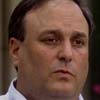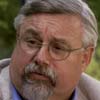In the burgeoning suburbs of Washington, D.C., business leaders and activists are pushing a new development strategy. Here's what it is and why it makes sense to them...
- RELATED LINKS
- Smart Growth America
The coalition of local, state and national organizations offers extensive environmental resources and a set of core principles for development. - Sierra Club: Building Better II
This 2006 report highlights 10 cities' innovative development programs to better handle stormwater and runoff pollution. The original 2005 "Building Better" report on sprawl is available on the same page. - NRDC: Picturing Smart Growth
This interactive feature uses computer imaging to redesign streets around the U.S. under smart growth principles. - A Shopping Nexus Outside Washington Plots a Future as an Urban Center
The New York Times reports on the redevelopment plans for Tyson's Corner. (Dec. 16, 2008) - Chris Miller
- Bill Lecos
- Stewart Schwartz
Chris Miller
President, Piedmont Environmental Council of Virginia

Virginia, Washington, D.C., are places where the economy is growing, where people want to live because of good jobs, great education opportunities. So growth is happening, and we have to accommodate it. But we can do it better. We can plan it better. We can put it in better locations. We can put it in places where we can deal with the impacts in the most effective way. ...
If we do it right, the effects on the environment are reduced by half or more. If we do it wrong, the possibility of actually losing the Chesapeake Bay goes up dramatically. ... It's going to be the next generation of decisions that is going to determine if we can clean up the rivers and the bay. And if we can, then the world will be a better place. ...
The exciting thing is in the Washington metropolitan region, we have literally hundreds of examples of where we're doing it right, and they're the places that people want to live the most; they're the places that people visit the most. And so we have the success stories sitting out in front of us. What's hard is to realize that sometimes you have to say, "No, this is the wrong place; this is the wrong kind of land use," and you have to be willing to stand up and say that. And you have to keep doing it over and over again, because in a democracy, one thing we can't stop is the latest speculative development idea, and we're always going to have to be confronted by that.
Bill Lecos
President, Fairfax County Chamber of Commerce

When [did] you see opinion in the business community of Fairfax County coalescing around a new [growth] strategy?
I can cite the date of March 2004 from my Chamber of Commerce, because that's the day our board of directors said: "We need to grow differently. This is where we're going to put our efforts." We literally passed a resolution that said transit-oriented development is the future of Fairfax County and should be, will be, our primary development strategy.
That's a big shift away from the car to mass transit.
It's a big shift away, and mass transit is the linchpin upon which that strategy is built, but it opens up many, many alternatives beyond just the mass transit. But it's absolutely a big shift for a business community and a business organization that's been around 80 years.
There are people who argue ... the real problem with congestion is they didn't build enough highways in the '70s. We should have built more roads, not fewer. ...
... There's no question that a lot of highway miles were taken off the plan, but I'm not sure we would have ever built enough highways to have kept ahead of the congestion. And at this point, knowing what we know in 2008 and having filled up my gas tank at $4 a gallon, I'm not sure more highways would be the answer for the next 25 years in any case. We have to change not just how we move around, but we have to change how we live, where we go, and that's the real benefit of transit-oriented development. It's the land use, not just a mode of transportation. ...
At the end of the day, Tysons [Corner, Va.] will be a much, much more residential place. ... If you had more people living in Tysons Corner, they're going to do one of three things in the workday, those that work: Some of them will be lucky enough to work in Tysons, and they'll have no commute to speak of; many will get on the mass transit, on the rail, and go to their jobs someplace else, but they're not getting in a car to do it; and those people who still have to get in their car, ... at least they'll be driving opposite the traffic pattern. They'll be leaving Tysons when everyone else is coming in.
So more residents helps on that scale. It also is what drives the livability of a community. You don't open up sidewalk cafes, dry cleaners, art stores, antique shops, you don't put public art out there unless you've got people to admire it at least 18 hours a day. And the residents create the vibrancy that defines a real attractive urban center.
When you get right down to it, you don't need cities for the same reasons we have historically. You don't need to really concentrate work necessarily for the same reasons we used to, but every indication is that the human experience is still required for creativity; that you need that vibrancy that comes from interaction, and interaction doesn't happen in cubicles. Interaction happens in open spaces, in public spaces. It happens on streets. It happens in cafes. And that's the experience that a new Tysons will bring that is largely not there today. ...
Providing the foundation for all of this to happen, though, does take substantial public investment. First and foremost is quite obviously the building of a rail system. Now most of the cost of the rail system is being carried by a special tax on the commercial development in Tysons Corner or being paid for by the toll road [to Dulles Airport] by cars who travel today on the Dulles Corridor. But providing for the future infrastructure needs of Tysons will require some incredibly creative and new approaches to public participation. ...
So in your polling, if you asked people whether they like the old suburban model like Tysons, where you get in your car and you drive out there, or a new, more densely compact but more urban model as in the next-door county, Arlington, how does that come out?
Two-thirds of the people prefer the new, more compact model of development, and when we asked them why they liked it better than the old suburban model, it came down to a matter of choices -- choices in how they moved around, choices in what they did when they got there. It's a comfortable level of development. We're not talking Manhattan, New York, in terms of its concentration. This ain't Tokyo that's coming anytime soon. But it is a more efficient use of space that people can identify with, and because we see it every day -- since people travel around in the course of either going to work or going to play -- it's something that isn't new. And so there isn't a shock value or an anticipation or fear of the unknown in this case.
Stewart Schwartz
Executive Director, The Coalition for Smarter Growth

Having a farmers' market here [in downtown Arlington, Va.,] is kind of an odd combination.
No, it's a perfect combination. It ties the countryside to the city, and we're building a city here to save the countryside. ...
But what's the benefit to the farms of having concentrated development like this?
Lots more customers, all in one place, coming to you. And they can sell direct to their customers rather than selling to a middleman, so their profits are larger.
So this area, with this concentrated development, diverse population, old, young, epitomizes smart growth?
Yes. It's a national award winner. It saves the countryside by growing here. And it ties the countryside to the city, with growers tied directly to their customers. ...
Some people did not want a lot of growth. And other people are saying, look, population is coming, and we've got to grow.
And that's the point we've taken, that with the growth that is coming to the [Chesapeake] Bay watershed, we have to grow in a more wise way, in a way that protects the watershed, uses less land, gives people the option not to have to drive for every trip, which can also mean fewer highways that we have to build.
So the critical choice, then, sounds as though it's where we grow and how we grow?
That's right. The "where" are places like Metro stations, our cities, historic towns. The "how" is the design of those communities. Do we create places that are great places to live and walk and work and play? Do we have a network of streets like we used to build in our historic cities and towns? Do we create streets that are safe to walk and bicycle on? It's all part of the how.
What does smart growth have to do with protecting the environment out on Chesapeake Bay?
Well, one of the contributors to the stress of the bay has been this rapid runoff in rain events from all the parking lots and roads that we have built in our region, and all the dirt and toxins that go with it. What smart growth does is reduce the amount of land that we pave in the watershed. By rebuilding where we've already built before, you get a double benefit. You don't build where there are forests and farms; you build where you already have land paved over. And when you build new buildings nowadays, you have state-of-the-art stormwater practices, green roof buildings and other techniques to reduce the amount of stormwater that flows into the bay.
But if you cramp more people into these areas around the transit stations, don't you get more runoff? Don't you get more parking lots, more roofs, more flat surfaces?
The point is, we actually already have the parking lots around the Metro stations at this point. We have acres of parking lots in one-story strip shopping centers around our regions. And what you do is you reuse those parking lots to create a truly walkable, humane community, and in the process you can also set aside land for retaining stormwater; you can build green roofs on the buildings; you can use some of the best practices today to have a lower impact on the watershed. ...
And when you build up, you create land that you can save in open space, in parks and public spaces. And very often, new stormwater facilities are built as ponds that people can enjoy and use rather than being fenced off. So there's been a lot of progress in this area.